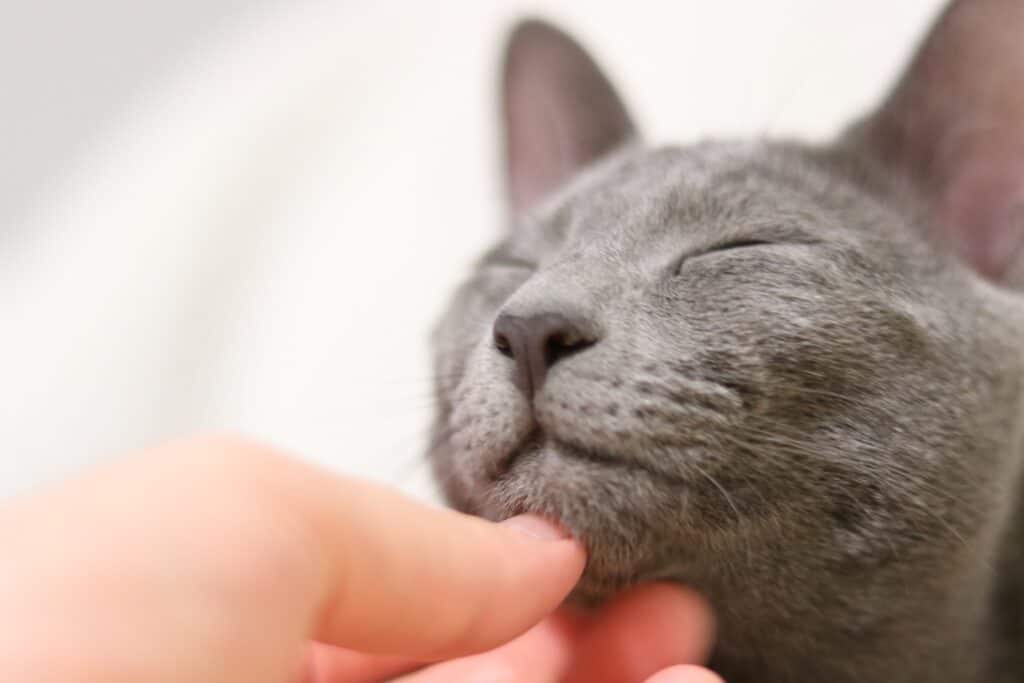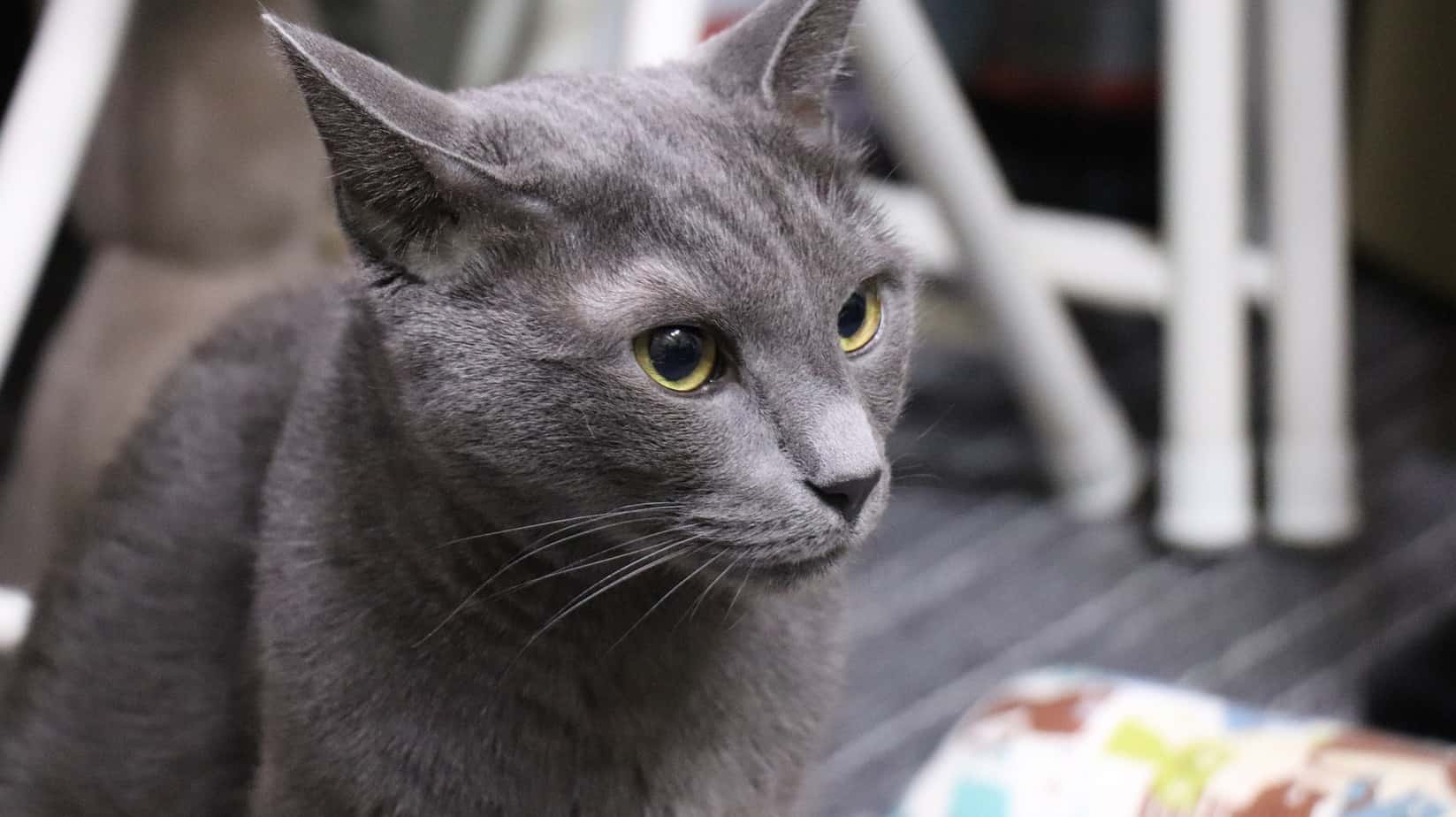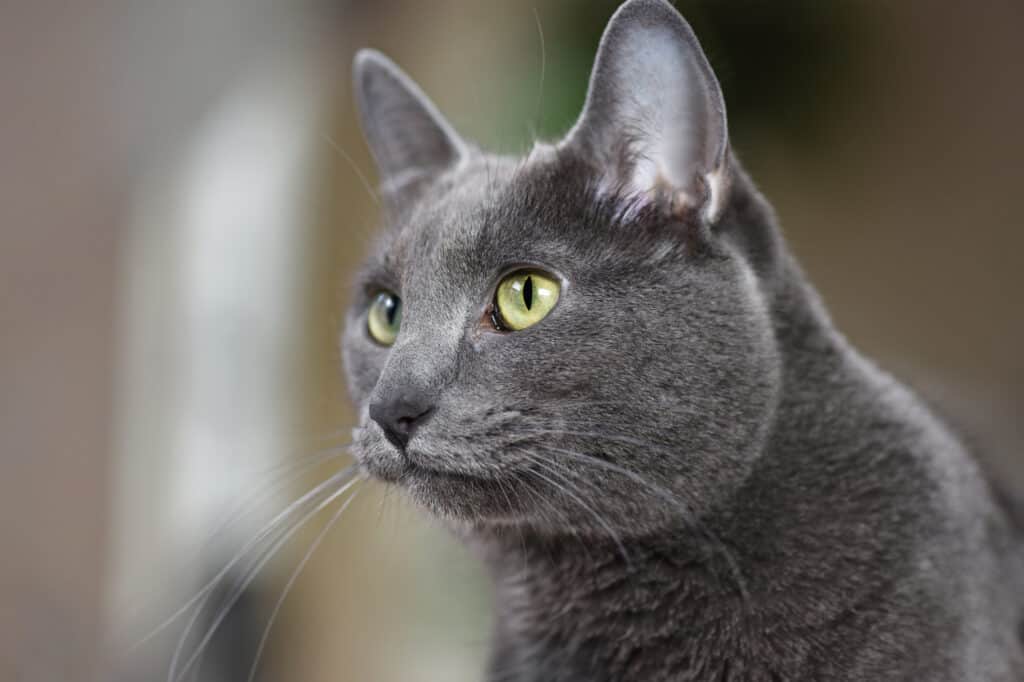Are you one of those people who would really love to own a cat, but your allergies get in the way? Are there certain cat breeds that are better for people with allergies?
If that’s you, we have good news for you. Are Russian Blue cats good for allergies?
Apart from the fact that Russian Blues are beautiful cats with a great and loving personality, they are among the best choices for people who deal with cat allergies.
Why are Russian Blue cats good for allergies?
There are a couple of reasons that Russian Blues are an excellent choice for people who suffer from cat allergies. The main ones being:
- Low fur shedding
- Low levels of Fel D1 protein
- Less dander
Low fur shedding
This may come as a surprise for people who have seen a Russian Blue up close because compared to other cat breeds, these Russians have very thick and lush fur.
For that reason, you might be fooled into thinking that they shed a lot of hair, but that’s not the case.
Russian Blues have a double fur coat and, while most cats have flat hair, the hairs of a Russian Blue’s coat are placed at a 45-degree angle to their body. On top of that, they have many more hairs per square inch than any other breed.
Their fur will shed a little when the seasons change to spring and fall, but it’s noticeable less than other cat breeds.
Low levels of Fel D1 Protein
Apart from hair and skin flakes, this protein is the number one cause of cat allergies. It’s produced in a cat’s sebaceous glands and is present in their saliva.
Science has not yet figured out the exact purpose of this protein, but it assumes that it delivers protection to the cat’s skin when they groom themselves.
When is certain, though, is that it causes an allergic or asthmatic response in humans.
The great news is that Russian Blues are among the few cats who produce lower levels of this protein and are therefore a better fit for people with cat allergies.
Less dander
Russian Blues have considerably less dander than other cat breeds, and the bit that they do have is generally not sufficient to induce allergic reactions in humans.
That being said, dander is less of an issue when it comes to causes of allergies and easily remedied by regular vacuuming.

Are female Russian Blues better?
Although there are several differences in behavior and character between male and female cats, it is usually not the most important consideration for aspiring cat parents.
However, if you’re suffering from cat allergies and plan on getting a Russian Blue because they are hypoallergenic, you should care about the gender.
Female cats tend to be lower in their production of allergens and may be a better choice for people prone to cat allergies.
Nevertheless, if you’ve fallen in love with that cute boy Russian Blue, by all means, go for it. Another good solution to reduce allergens is to neuter the little guy. Neutered male cats produce considerably fewer allergens.
How to minimize allergic reactions?
Although it’s easy to recommend Russian Blue cat for cat lovers who are sensitive to allergies, everyone’s situation and everyone’s health is different. You may still find that – although less – you can still get an allergic reaction.
Apart from choosing a cat breed like the Russian Blue, there are other precautions you may want to implement to make sure your allergies won’t bother you. These include:
- Regular vacuuming – we would advise getting a HEPA filter for your vacuumer or a hypoallergenic vacuum (we like this one). These are really effective in trapping any allergens.
- Wash your bedding at least twice a month – This will get rid of the allergen, mites, and dander trapped in your sheets. Wash them preferably at higher temperatures and with an allergy-fighting detergent (like these).
- Don’t allow your cat in your bedroom – although it might seem cozy, it’s best not to sleep with your cat for people prone to allergies. If you just have to give in (most people do), then the previous one is even more important.
- Wash your hands regularly – After the pandemic, we all got used to this, and it’s a good thing to continue when you handled your pet or things that belong to them, especially if you’re allergic.
- Regularly clean, wash or disinfect cat toys, blankets, etc. – Because allergens stick to any surface, regularly clean your cat’s belongings. This will help against them transferring to you and causing a reaction.
- Air filters (especially HEPA) can help – Air filters (like this one) may help clean any allergens that float in the air. Especially if you live in a colder region when you don’t regularly open a window.
- Bathing your cat – Most cats hate bathing, and, honestly, they’re mostly more than capable of keeping themselves clean. On the other hand, it might help to avoid allergic reactions. See our article about ‘how to bathe a cat’ for some valuable tips on making it tolerable for both you and your cat.
- Wiping your cat down with a damp cloth – If taking a full bath is not something your cat enjoys, and probably neither do you, then just wiping them down with a damp cloth can already help. This will remove any loose hairs and dander from their coat.
Final thoughts
Getting a Russian Blue is an excellent choice if you’re battling allergies. Other options are an Oriental cat, a Balinese cat, or a Sphynx.
Russian Blues are probably among the easiest to find since they are not particularly rare, both in the U.S. as well as the rest of the world.
A good choice is to get one from a breeder. This will set you back $500-$800. Adoption is also an option and will be much easier on the wallet. Most shelters regularly see Russian Blues, although it might be a bit harder to find than going to a breeder.
We speak from experience that apart from the benefit that Russian Blues are great for people with cat allergies, they are among the sweetest and most beautiful breeds you can find. Their luscious blueish-grey fur and bright green eyes will make you fall in love with them instantly.





